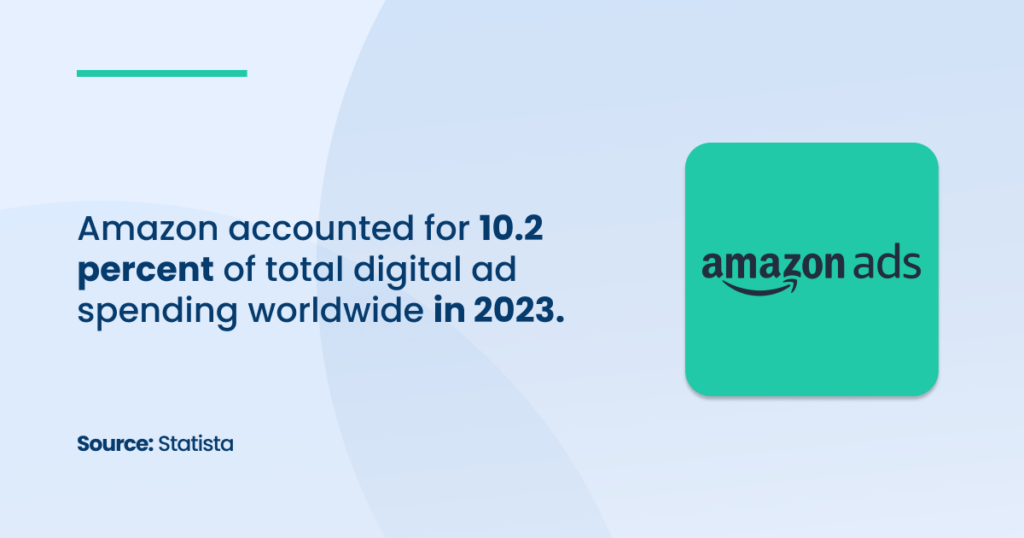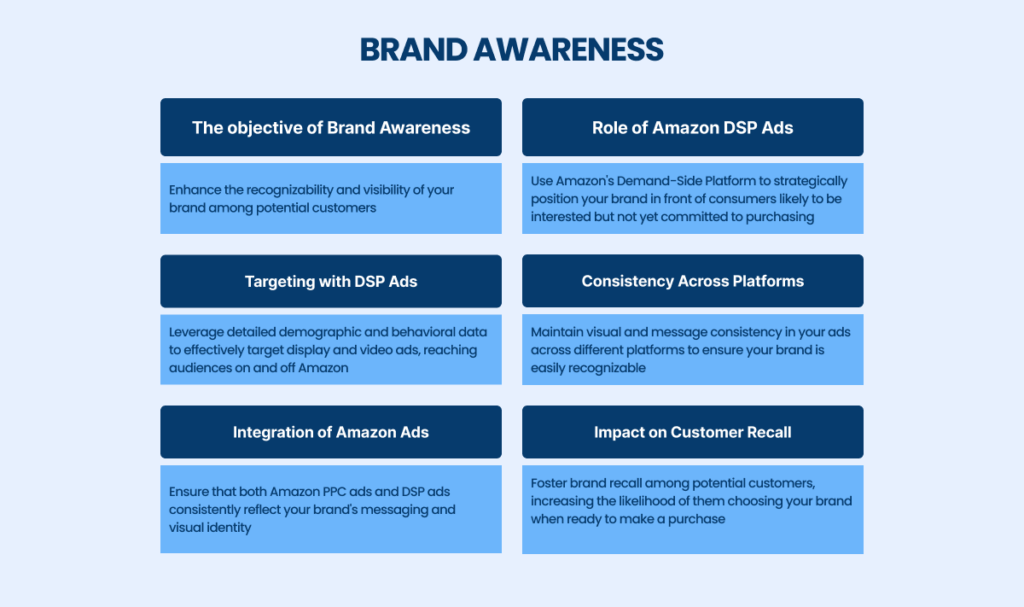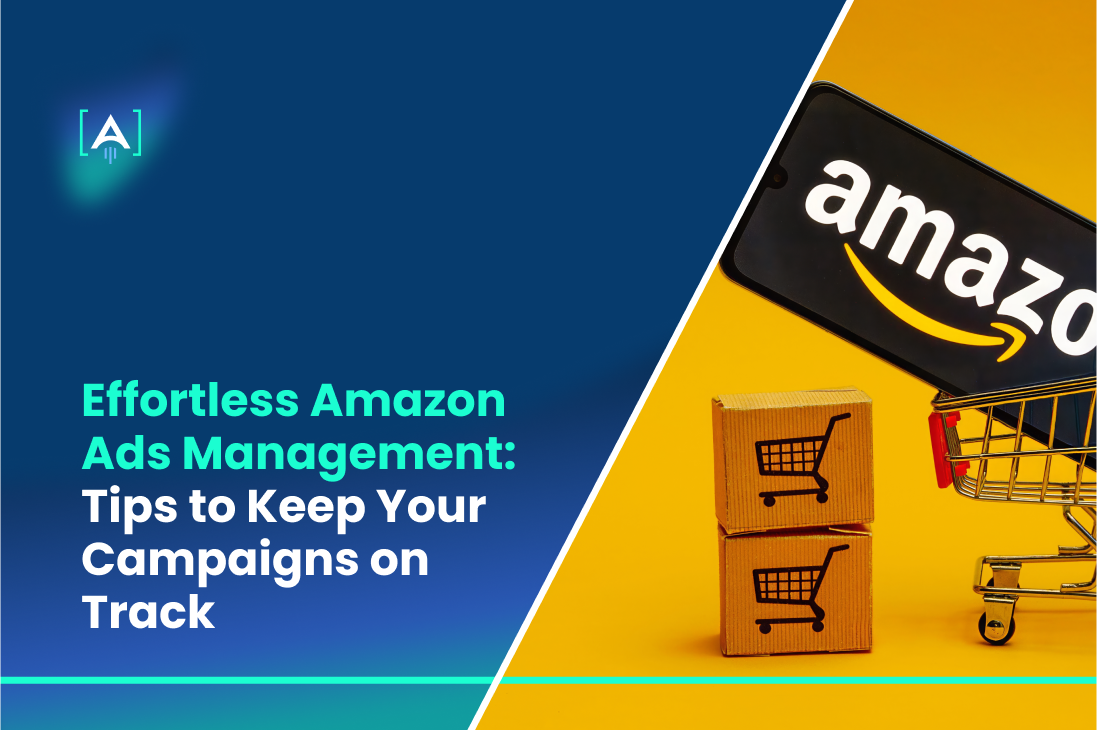Amazon has become the dominant force in e-commerce, offering businesses immense opportunities to reach a wide audience.
Navigating the complexities of Amazon advertising can be overwhelming. Effective management maximizes your return on investment (ROI) and ensures your campaigns run smoothly. This is exactly where the expertise of an Amazon Ads Agency becomes invaluable, optimizing your campaigns and ensuring they perform at their best.
According to Statista, Amazon reported 46.9 billion U.S. dollars in revenue generated through advertising sales worldwide.
Source: Advertising revenue of Amazon worldwide from 2019 to 2023, Statista
This guide will provide actionable tips to streamline your Amazon ads management process and achieve sustained success.
Understanding Amazon’s Advertising Platform
Amazon’s advertising platform offers a powerful way to boost visibility and sales directly on one of the world’s largest retail websites.
Amazon’s advertising business has been growing significantly faster than Google’s and Facebook’s, with a 25% increase to $9.5 billion in the third quarter of 2022.

Effective Amazon ads management requires understanding different ad types and strategies to optimize performance and control costs.
Ad Types
To understand what are Amazon ads, it’s important to explore the various types available for advertisers to utilize on the platform.
The Amazon advertising platform categorizes its offerings into several types, each serving unique marketing goals and strategies.
what are Amazon ads
Sponsored Products
Sponsored Products are cost-per-click (CPC) ads that promote individual product listings on Amazon. This ad type is a staple in Amazon ads management. It allows sellers to show their products directly in search results and product detail pages, targeting specific keywords for Amazon ads.
Source: Amazon
When setting up these ads, sellers can choose automatic or manual targeting. Automatic targeting allows Amazon to target ads based on relevant keywords, while manual lets the advertiser select specific keywords.
Sponsored Brands
Sponsored Brands (formerly Headline Search Ads) are also CPC ads that allow brands to promote a custom headline, logo, and up to three products in their ads.
Source: Amazon
These appear in more prominent positions than Sponsored Products, such as above or alongside search results, making them highly visible and effective for brand recognition.
Sponsored Display
Sponsored Display ads offer a way to reach potential customers on and off Amazon. These auto-generated, display-style ads target audiences based on shopping behavior and interests.
Unlike Sponsored Products and Brands, Sponsored Display ads use a cost-per-click or cost-per-impression model and can appear on Amazon and other websites and apps.
Source: Amazon
Optimizing Your Amazon Ad Campaigns
To ensure effective Amazon ads management, monitoring and adjusting your campaigns according to their performance and the evolving landscape of Amazon marketing is crucial. This involves regular analysis of advertising cost of sales (ACoS), checking the performance of your chosen keywords for Amazon ads, and adapting your strategies to maximize return on investment.
Always test different ad copies and layouts, and stay updated on Amazon’s advertising guidelines and features to make the most out of your advertising efforts.
Key Metrics for Amazon Ads
Understanding the critical metrics in Amazon ads management is crucial for optimizing your advertising strategy and ensuring you achieve the best return on investment.
These metrics, including Advertising Cost of Sale (ACoS), Impressions, and Click-through Rate (CTR), provide deep insights into your campaigns’ performance.
ACoS (Advertising Cost of Sale)
ACoS is a vital metric in Amazon ads management. It measures the efficiency of your advertising spend relative to its revenue.
Specifically, ACoS is the ratio of ad spend to targeted sales and is expressed as a percentage.

Understanding ACoS is essential for determining the profitability of your Amazon sponsored ads.
- Budget Management: A high ACoS indicates that you’re spending too much on ads relative to the revenue you’re generating, which might mean your bids are too high or your targeting is off.
- Optimization: Lowering your ACoS typically involves refining your approach to creating Amazon ads, such as enhancing your keyword strategy or improving your product listings.
- Profit Margins: Your target ACoS should be aligned with your product margins. You’ll need a lower ACoS to remain profitable if your margins are slim.
ACoS clearly shows the direct impact of ad spending on sales, making it indispensable for evaluating the financial health of Amazon ad campaigns.
Impressions
Impressions measure the number of times your ads are displayed, offering initial insights into the reach of your Amazon display ads or video ads.

Impressions are more than just a number; they are a gateway to understanding how visible your products are in the vast Amazon marketplace.
Click-through Rate (CTR)
CTR is a critical measure of how effectively your ads engage potential customers. It’s calculated by dividing the number of clicks your ad receives by the number of impressions it gets.

The average CTR on Amazon Advertising is 0.35%. CTR offers valuable insights into the performance of your Amazon video ads, Amazon-sponsored ads, and display ads:
- Ad Relevance: A higher CTR generally indicates that your ads are well-targeted and relevant to the audience. It suggests that your keywords for Amazon ads and ad creatives are effective.
- Engagement: CTR helps you gauge the engagement level of your ads. Low CTR could indicate that your ads are not compelling enough or are reaching the wrong audience.
By monitoring CTR, you can better understand how appealing your ads are to your target customers and refine your strategies accordingly.
Leveraging Metrics for Amazon Ads Management
By closely monitoring ACoS, impressions, and CTR, you can more effectively manage your Amazon ads cost, improve your ad creatives, and adjust your campaigns for better performance. These metrics help you track the success of your current campaigns and inform your decisions on creating Amazon ads that resonate better with your target audience and drive more sales.
Whether you’re running Amazon-sponsored ads, display ads, or video ads, understanding these key metrics is essential for optimizing your advertising efforts and achieving your marketing goals.
Strategic Campaign Planning
Strategic campaign planning is a cornerstone of successful Amazon ads management. It helps businesses align their advertising efforts with their overall marketing goals.
It is crucial to understand Amazon ads and how to deploy them effectively through Amazon DSP ads, PPC campaigns, and ad groups.
Goal Setting
Setting clear, actionable goals is the first step in any advertising campaign. It allows you to measure success and direct resources efficiently.
In Amazon’s ad management, goals should be specific and tailored to the unique capabilities and analytics provided by Amazon’s advertising platform. This includes leveraging data from Amazon PPC campaigns and understanding the reach and effectiveness of Amazon DSP ads.
Each goal, whether it’s enhancing brand visibility, increasing sales, or introducing new products, requires a unique approach and set of strategies to be successful.
Brand Awareness
Brand awareness is about making your brand more recognizable and visible to potential customers.

Sales Conversion
The ultimate aim of most Amazon advertising campaigns is to drive sales. Effective Amazon PPC campaigns can directly lead to higher sales conversions by targeting specific keywords related to your products.
Source: Invespcro
Amazon PPC ads work on a cost-per-click basis, meaning you pay only when a potential customer clicks on your ad. This makes them a highly cost-effective way of driving traffic to your product listings.
Product Launches
Launching a new product on Amazon can be particularly challenging due to the marketplace’s competitive nature. However, a well-planned Amazon ads campaign can significantly enhance product visibility and accelerate market entry.
For new product launches, advertising campaigns should be designed to create buzz and generate interest among potential customers.
Amazon DSP ads are particularly useful for product launches because they allow for broader reach and more creative ad formats, such as video, which can tell a compelling story about a new product.
Additionally, setting up an Amazon PPC ad group specifically for the new product can help to capture search traffic from customers who are already interested in similar products.
Keyword Research
Keyword research is a foundational aspect of effective Amazon ads management. It guides the direction of your PPC ad campaigns and ensures that your sponsored product ads, video ads, and other types of Amazon DSP ads are seen by the right audience.
The process involves identifying the search terms closely related to your products and the interests of your target market. Mastering keyword research can dramatically improve your campaign’s reach and efficiency.
Long-Tail vs. Short-Tail Keywords
Understanding the difference between long-tail and short-tail keywords is crucial in Amazon ads management, as each type serves different goals within PPC ad campaigns and sponsored product ads.
Source: My codeless website
- Short-Tail Keywords: These are broader and often contain one or two words. Due to their high search volumes, short-tail keywords are highly competitive but may not always deliver the best conversion rates because they lack specificity.
For example, a short-tail keyword could be “shoes,” which is too general to attract consumers close to making a purchase decision. - Long-tail keywords: These keywords are more specific and usually contain three or more words. Due to their specificity, they tend to attract more qualified traffic with higher intent to purchase.
An example of a long-tail keyword is “women’s waterproof hiking shoes,” which targets a specific customer need and is likely to convert at a higher rate.
Effective keyword research, utilizing both long-tail and short-tail keywords, is essential for optimizing your Amazon DSP ads, video ads, and sponsored product ads.
By strategically employing the right mix based on your specific campaign goals and audience, you can significantly enhance the performance of your Amazon advertising efforts.
Creating Compelling Ad Content
Creating compelling ad content is a critical element of successful Amazon ads management. This content engages potential buyers and converts their interest into sales. The effectiveness of your PPC ad campaigns largely depends on how well you craft your product titles, images, and ad copywriting.
This content must be strategically designed to stand out in a highly competitive marketplace.
Product Titles
Your product title is the first thing a potential customer sees, making it a pivotal element of your PPC ad campaign. A well-crafted product title should include brand, key features, product type, size, color, and quantity.
- Include Relevant Keywords: Ensure your title contains keywords that potential buyers will likely use when searching for your product. Use campaign manager tools to identify high-performing keywords and include them strategically in your titles without making them seem forced or unnatural.
- Clarity and Readability: While it’s important to include detailed information, your title should also be easy to read and understand. Avoid keyword stuffing, which can detract from the user experience and potentially hurt your visibility.
- Use Brand and Specifications: Always include your brand name to build brand recognition and include specifics like size or quantity, which are crucial for customer decision-making.
Product Images
Images play an equally crucial role in your sponsored brand ads and must be of high quality and relevance. Here’s how to effectively manage images within your Amazon ads management strategy:
- High-Quality Images: Amazon requires high-resolution images (preferably 1000×1000 pixels or larger) so customers can zoom in for a closer look. Quality images reduce perceived risk from the buyer’s perspective and aid in the purchasing decision.
- Use Multiple Angles: Include images from different angles and, if applicable, show the product being used. This helps customers better understand what they are purchasing.
- Highlight Key Features: Use your images to highlight important features and benefits of the product. If your product has multiple components or accessories, consider including an image that shows exactly what comes with the purchase.
By enhancing product titles and images, you significantly increase the chances of catching the eye of potential buyers. You effectively use your ad spend to drive more informed and motivated traffic to your listings.
Ad Copywriting: Crafting Effective Ad Copy
Ad copywriting in Amazon ads management is about more than just describing a product. It’s about persuading Amazon shoppers that your product meets their needs or solves their problems.
- Focus on Benefits, Not Just Features: While features are important, benefits connect emotionally. Explain how your product makes life easier, better, or more enjoyable.
- Use Emotional Triggers: Good copywriting taps into emotions. Words like “effortless,” “peace of mind,” “ultimate,” and “perfect” can invoke feelings that lead to purchases.
- Include a Call to Action (CTA): Every good ad copy ends with a compelling CTA. Encourage shoppers to act now, whether it’s taking advantage of a limited-time offer, enjoying a discount, or simply not missing out on the hottest product of the season.
Effective ad copywriting can significantly improve the performance of your sponsored brand ads, turning browsers into buyers and maximizing the return on your ad spend. Whether crafting succinct, persuasive copy for PPC campaigns or optimizing listings with negative keywords, the right words can dramatically elevate your Amazon advertising success.
Partner with [A] Growth Agency for Your Amazon Ads Management
Mastering Amazon ads management is essential for thriving in today’s competitive e-commerce landscape.
Remember, effective Amazon advertising requires ongoing attention and optimization. [A] Growth Agency will be with you during the process. Our dedicated team of experts can help you navigate the complexities of the platform, maximize your ROI, and focus on growing your business.
Growth isn’t just what we offer. It’s who we are. It’s embedded in our DNA and drives everything we do.
Are you ready to take your Amazon advertising to the next level with us?

